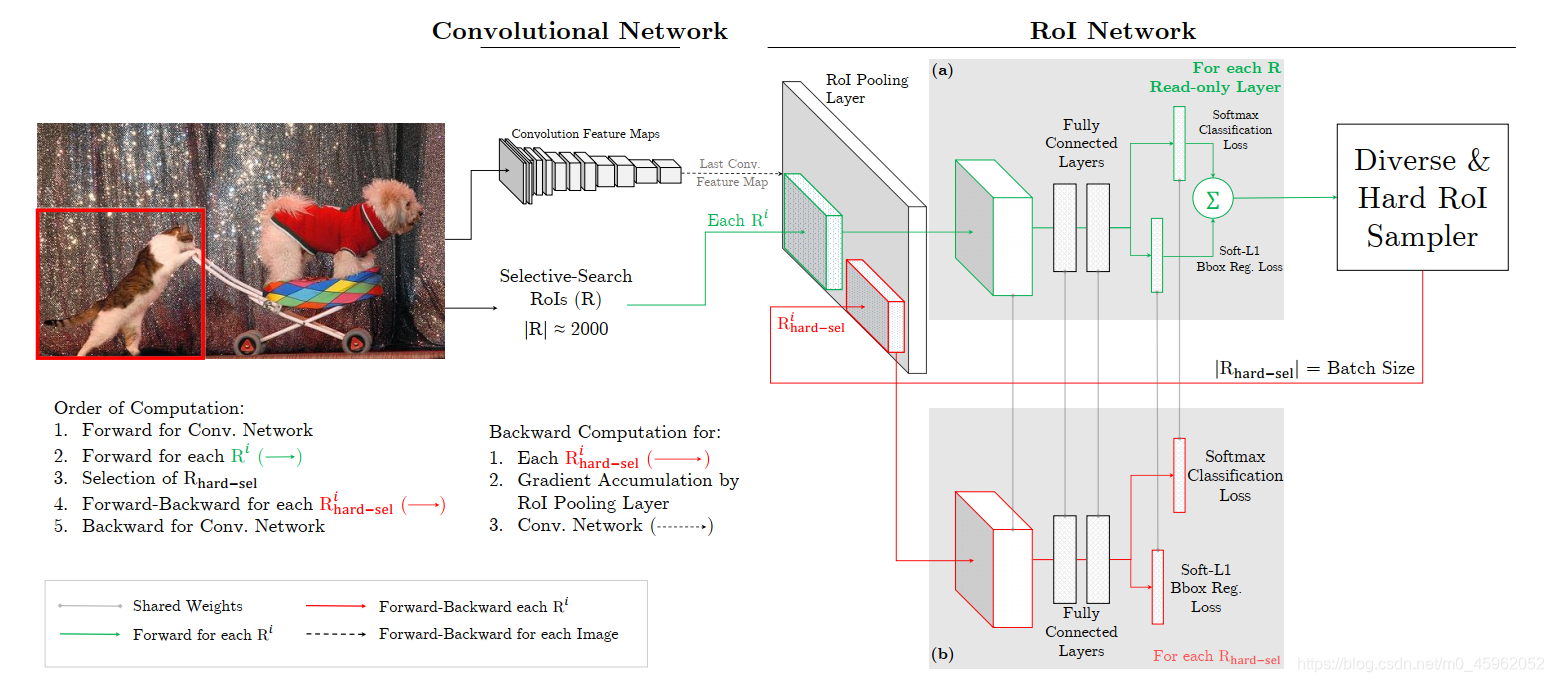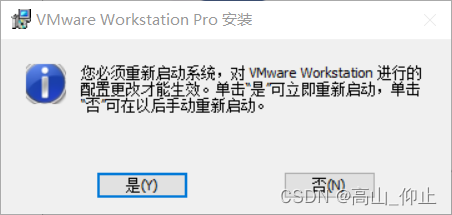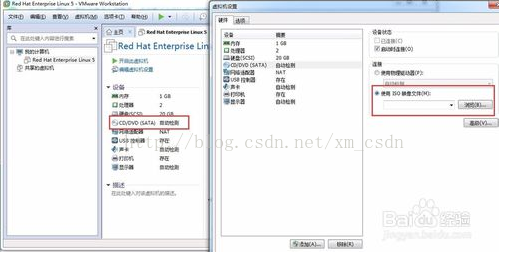
代码上如何实现Read-only Layer与R _hard-sel权限共享?
https://github.com/abhi2610/ohem/blob/master/models/pascal_voc/VGG_CNN_M_1024/fast_rcnn_ohem/train.prototxt
下面代码对应(a),前向传播过程
## Readonly RoI Network
layer {name: "roi_pool5_readonly"type: "ROIPooling"bottom: "conv5"bottom: "rois"top: "pool5_readonly"propagate_down: falsepropagate_down: falseroi_pooling_param {pooled_w: 6pooled_h: 6spatial_scale: 0.0625 # 1/16}
}
其中:propagate_down设置为false,可实现forward inference
下面代码对应(b),前向和反向传播过程
layer {name: "roi_pool5"type: "ROIPooling"bottom: "conv5"bottom: "rois_hard"top: "pool5"propagate_down: truepropagate_down: falseroi_pooling_param {pooled_w: 6pooled_h: 6spatial_scale: 0.0625 # 1/16}
}
其中:propagate_down设置为True,可实现前向和后向传播,减小难样例的损失,同时可以调整卷积层的参数
为什么要hard mining?
- 1 减少fg和bg的ratio,而且不需要人为设计这个ratio;
- 2 加速收敛,减少显存需要这些硬件的条件依赖,原因是直接训练难样例,使损失最大的函数对应的样例经过训练后loss 直接减小;
- 3 hard-mining已经证实了是一种booststrapping的方式, 尤其当数据集较大而且较难的时候;
- 4 eliminates several heuristics and hyperparameters in common use by automatically selecting hard examples, thus simplifying training。 放宽了定义negative example的bg_lo threshold,即从[0.1, 0.5)变化到[0, 0.5)。
取消了正负样本在mini-batch里的ratio(原Fast-RCNN的ratio为1:3)
参考:https://blog.csdn.net/qq_36302589/article/details/84998509
















![VMware安装虚拟机操作步骤[史上最详细]](https://img-blog.csdnimg.cn/1795b06cf4254965a81ff0a6f3059b88.png)

